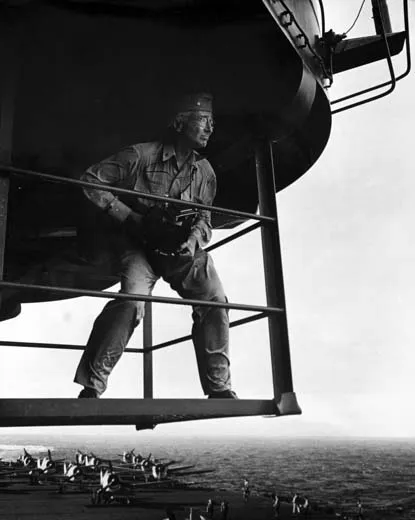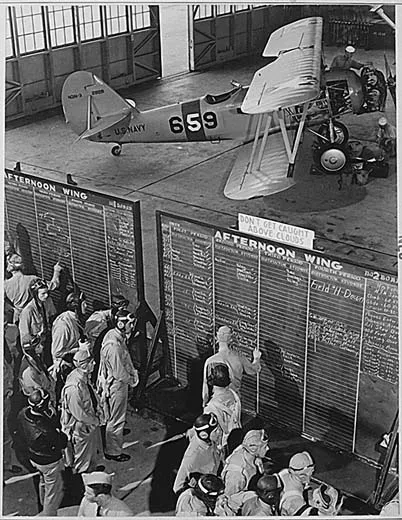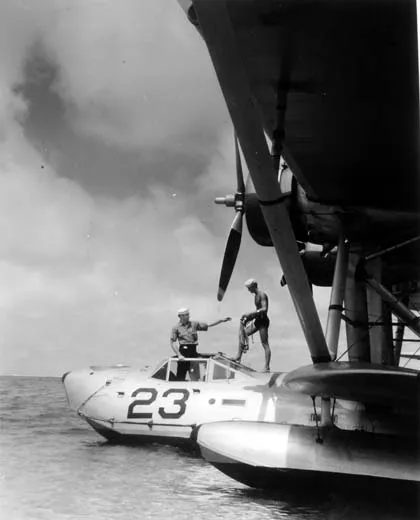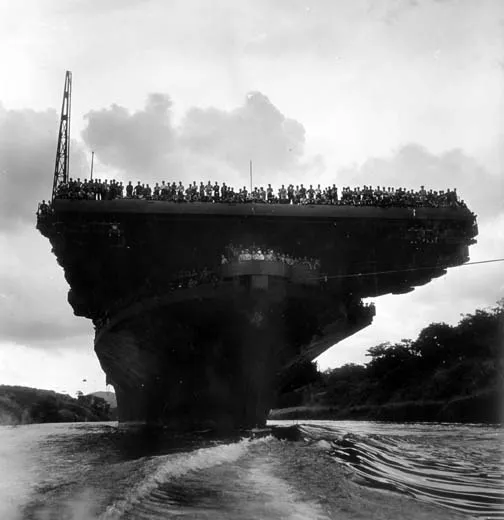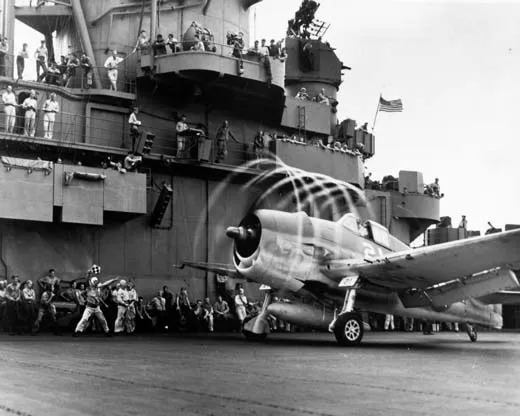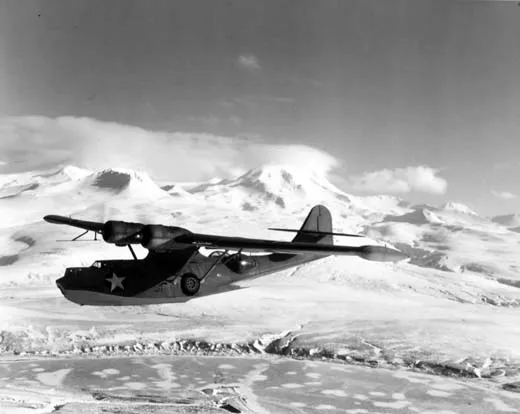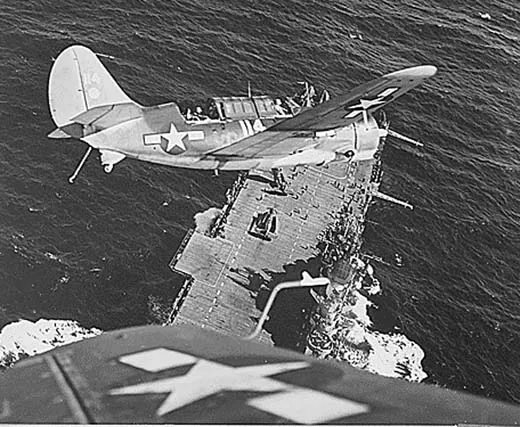Steichen Sent Me
Led by famed fashion photographer Edward Steichen, a group of camera men captured the action of World War II naval aviation.
/https://tf-cmsv2-smithsonianmag-media.s3.amazonaws.com/filer/Steichen-book-hero.jpg)
In his new book Faces of War: The Untold Story of Edward Steichen’s WW II Photographers, Mark D. Faram, a writer and photographer for the Navy Times, tells the story of the U.S. Navy’s Aviation Photographic Unit, which photographer Edward Steichen founded to document the action abroad during World War II. The following excerpt tells how Steichen cut through the sometimes rigid Navy bureaucracy to gain access for his photographers.
Steichen arranged with the Navy’s personnel officials, then housed in what was called the Bureau of Navigation, to provide his men with special orders that were written in vague enough language to allow them the flexibility he wanted.
Best of all, Steichen set up the system so his photographers could plan their own trips and submit their own paperwork to get their orders cut without higher approval.
“Once we learned how to do this, we were set,” said Lieutenant Victor Jorgensen, who showed up in December of 1942 just as the unit was beginning to gather steam within the Navy Department. “It was just unreal what kind of access that gave us—and the eyebrows it raised, too.”
Lieutenant Barrett Gallagher, who would join the unit in late 1944, claims the orders had the ability to evoke strange responses from those who read them, as they authorized the photographers not only total freedom of movement but also to have two hundred pounds of excess baggage, and the priority to bump many senior officers off flights.
“That didn’t go over too well with some senior officers,” Gallagher would recall. “No one wants to give up their seat, but to have it go to someone junior in rank did not make us too popular with some.”
As Gallagher prepared to make his inaugural trip as part of the unit in November 1944, he made his way with all his gear from New York to Treasure Island in San Francisco, and from there was trying to get on a booked-solid Navy PBY Catalina seaplane bound for Pearl Harbor.
As he was only a lieutenant at the time, he presented his orders to another Navy lieutenant who was manning the transportation desk at the flight terminal.
“He told me the flight was full and I should get used to the idea of waiting for the next flight, which had not yet been scheduled and I encouraged him to read my orders carefully before he made any final decisions,” he said. “He studied those orders carefully, pausing occasionally to look up at me and my rank and look back to the paper—he did this several times.”
Finally the officer stopped and looked at Lieutenant Gallagher with a puzzled face and declared, “Who the hell are you anyway, Jesus Christ? I have been manning this desk for a long time now, but I’ve never seen orders like these at all.”
Gallagher made the flight, leaving a Navy captain confused and disgruntled at how a junior officer could have received such high-powered orders.
He encountered similar reactions when he arrived in the Pacific. Gallagher had heard from the other unit members that the best course of action was to get attached temporarily to an admiral’s staff while on ships and under way.
“This would accomplish a few things right off the bat,” Gallagher said. “It would guarantee you a rack and a laundry ticket, but most of all it kept you from having to stand long boring watches—that’s because junior officers, once on board ship, were looked upon as free labor and assigned to various duties and watches—but no one dared mess with those assigned to the flag staff.”
Such was the case for Gallagher as he reported on board the aircraft carrier Intrepid, then the flagship of Rear Admiral Gerald Bogan, with his vaunted orders in hand.
“Once onboard, I first asked to see Bogan and then I asked him personally to join his staff,” Gallagher said.
“Son, what do your orders say?” Bogan asked, sizing up the brash young lieutenant and photographer in front of him.
“Sir, my orders are to go wherever I want, stay as long as I want and to return home when I feel like it,” Gallagher recalled saying as he handed his paperwork to the man wearing a single admiral’s star on his collar—royalty in Navy circles.
“Well, boy, why don’t you go and get something to eat and come and see me when I’ve had the time to read these amazing orders,” Bogan said.
When he returned later, Gallagher was greeted by the now-amazed admiral in his stateroom and braced himself for a butt chewing for his behavior.
“Son, I’ll be dammed if your orders aren’t exactly as you stated,” Bogan said, getting up from a chair and extending his hand to the photographer. “Welcome to my staff!” he said while shaking Gallagher’s hand.
“I was with him the rest of the war, just like that,” Gallagher would recount in years later. “He never gave me an order; I never had any conflict with him, but anywhere I went in the Navy, to any ship or anyplace in the Navy, all I had to do was say ‘Bogan sent me’ and it was much better than any orders—it was the ‘open sesame’ to the whole thing for me.”
Copyright 2009 Berkley Publishing/Penguin Group
Click on the photo gallery above to see a selection of the more than 100 black-and-white photographs in Faces of War.
